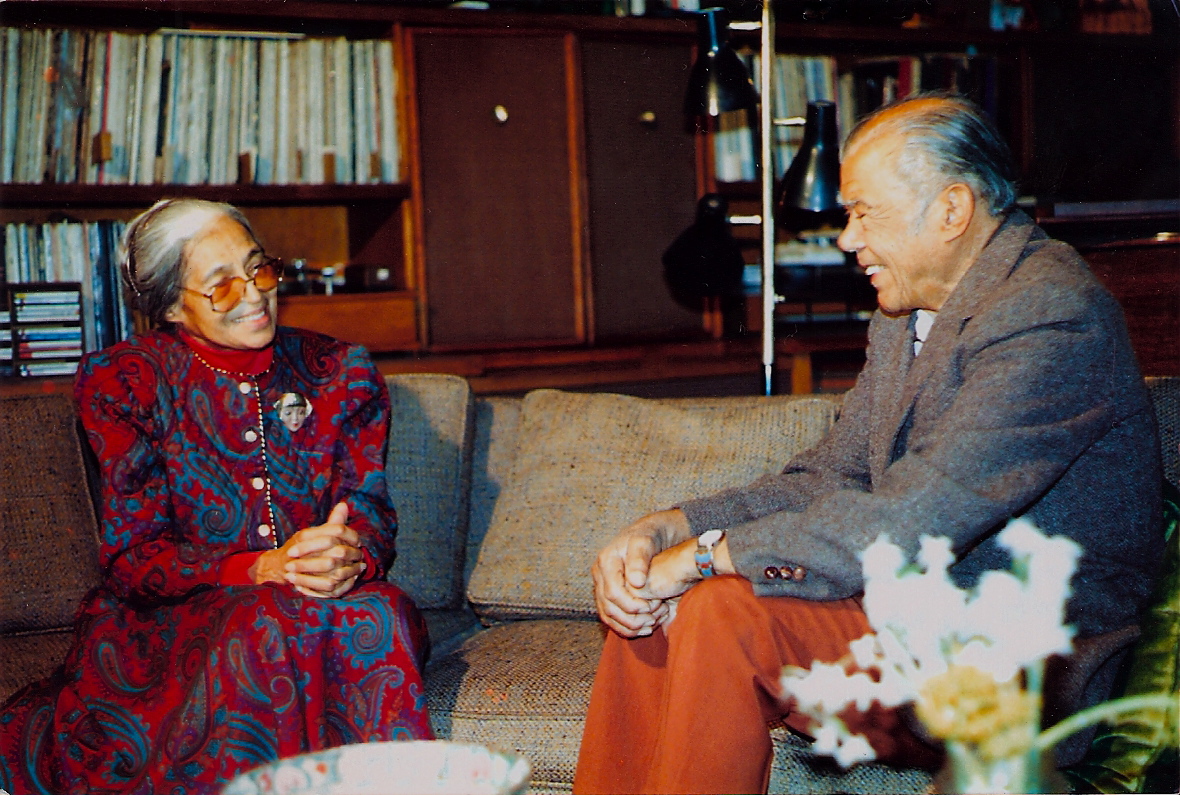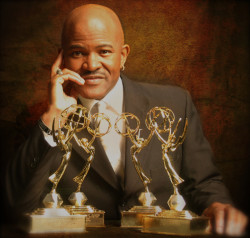
By Dr. Eric J. Chambers – Guest Commentary
On Monday, America commemorated Memorial Day by decorating the graves of military men and women all over the nation, including in San Diego. Their final resting places were adorned with patriotic red, white and blue flags. Some had flowers and other memorabilia indicating though their loved ones are gone, they are not forgotten. This holiday of remembering those who died serving America began after the Civil War in 1868 when it was called Decoration Day.
Meanwhile, Dr. Jack Kimbrough, one of San Diego’s most decorated servants, lies in an unmarked grave–23 years after his burial at Mt. Hope Cemetery off Market Street. He was without question one of the greatest San Diegans ever. And I, along with others, are amazed that this giant who died on April 13, 1992, and was buried on April 18, 1992, has never had a headstone placed on his grave.
Alonzo Horton, the man regarded as the father of modern San Diego and who Horton Plaza is named after is buried at Mt. Hope. So is Elisha Babcock, the builder of the Hotel del Coronado; so is Kate Sessions, a pioneering horticulturist. Needless to say, Dr. Kimbrough rests among some of San Diego’s finest. And rightfully so.
From time-to-time I go there to visit the grave of my nephew Lee Massey Smith, Jr who was 16 when he was gunned down in August 2004. I also visit my late cousin Cedric Jordan, a former US Marine, who rests beside his only child, Simeon, who was only 29 when he died in January 2007, just eight months before his dad. And while there at Mt. Hope three weeks ago, I ventured over to see another friend’s final resting place, Dr. Timothy J. Winters, the former pastor of Bayview Baptist Church. They all have nice grave markers.
As I walked those hallowed grounds, I even saw headstones on the graves of former gang members whose lives were cut far too short for one reason or another. Yet, when I went to Div 12, Sec 2, Lot 91, Grave 1-A, my dear friend Dr. Kimbrough lies below the grassy surface with nothing indicating that he once lived. Not a flower. Not a stuffed animal. Not a flag. Nothing. Nothing more than a small grave location marker just in case people like me wanted to find where he’s buried, only after going to the cemetery’s office to look it up in the 1992 burial binder. It relegates him to a mere footnote in history, yet he meant so much to the history of San Diego and America. And to me.
In fact, Kimbrough Elementary School in Logan Heights is named after him because of his stellar and impeccable contributions to San Diego and the world. But if any of its students or faculty wanted to pay respects to the school’s namesake, they’d be hard- pressed to find the grave without assistance. Thanks to San Diego genealogist Yvette Porter Moore, another person who cares deeply about his legacy, you can find info about him on FindAGrave.com, but there’s no picture of his grave.
At the time of his death, he had one of the most extensive collections of African artifacts in the nation. He showed them to me. Many of those pieces are now at San Diego State University and San Diego Mesa College. Sadly, I heard that Mesa’s head honchos have been pondering selling the donated articles which would be a shame. They belong together, not like our ancestors’ slave families that were sold apart.
In 1934 Dr. Kimbrough became the city’s first Black dentist. He was also the first Black president of the San Diego Dental Society and was appointed to the California State Board of Dental Examiners and became their president in 1968. President John F. Kennedy invited him to the White House in 1963 to commemorate the 100th anniversary of the Emancipation Proclamation that freed slaves in southern states. He was one heck of a man!
He was politically astute. In 1948 he organized some of the nation’s first sit-ins at the Grant Hotel in Downtown San Diego as they protested segregated lunch counters. He was the founding president of the San Diego Urban League in the 1940’s. And in 1951, he was a founding member and president of the San Diego Chapter of the NAACP.
I first met him and Quincella, his late wife, in the summer of 1991 at the Plaza Bonita Mall. It was there he told me he was friends with Dr. W. E. B. DuBois, the legendary sociologist, historian, civil rights activist and co-founder of the NAACP. He actually showed me a book Dr. DuBois autographed for him when he stayed at the Kimbrough’s home in 1959 on his way to Africa.
He also told me he personally knew writer Langston Hughes and Dr. Martin Luther King, Jr. Because of my love and respect for history, especially my ancestors, I vowed to interview him one day. The thought thrilled him as he was eager to share this history. He was glad someone cared enough to do so. And it thrilled me too! Vicariously I felt as if I touching the hands of some of the legends he befriended. Plus, I felt time was of the essence to record his story as he was elderly. For if he died before I could interview him, his story would die too, unless it was recorded for the ages.
Though he was 83 and I was 29 at the time, I looked up to him like a grandfather since mine were deceased. We became friends and I used to visit him, and we’d call each other on the phone, including on February 10, 1992, the morning Roots author Alex Haley died. I was at work editing at KGTV when he called saying, “Eric, hurry over with your camera! Rosa Parks is on her way to my house!” When I arrived, she was there, with Vernon Sukumu who brought her over for the visit. I shot video and lots of pictures because I knew this was history before my eyes. It was glorious seeing the smile on Dr. Kimbrough’s face. Sistah Rosa was thrilled to meet him as well. It was a great day.
 My debut on-air news report at KGTV was the feature I did on him. It aired on March 30,1992 as a part of our prime time Up Close TV Special. A couple of days before it ran, I brought a preview VHS copy over and showed it to him. We both sat at the foot of his bed and watched it in his Logan Heights home. In the report was a picture of Sylvia Hoover, his grandmother who was born on the Hermitage Plantation in Tennessee, which was owned by former president Andrew Jackson. He was believed to have been her biological father. Talk about history!
My debut on-air news report at KGTV was the feature I did on him. It aired on March 30,1992 as a part of our prime time Up Close TV Special. A couple of days before it ran, I brought a preview VHS copy over and showed it to him. We both sat at the foot of his bed and watched it in his Logan Heights home. In the report was a picture of Sylvia Hoover, his grandmother who was born on the Hermitage Plantation in Tennessee, which was owned by former president Andrew Jackson. He was believed to have been her biological father. Talk about history!
After the report ended, he looked at me with pride, a big smile and a twinkle in his eyes and said, “You’re going to have me signing autographs after this!” It gave me great joy to see him happy as he watched himself on the TV screen tell the story of his family escaping the Ku Klux Klan’s death threats in a covered wagon as they left their native Lexington, Mississippi where he was born on July 26, 1908. Looking at the documentary a day ago brought back fond memories. I’m so thankful for the vision to record him.
Exactly two weeks after the report aired, he died. In lieu of reading his obituary, the mini documentary which I titled “The Man Called Jack” was shown on a large screen during his funeral at Calvary Baptist Church. He told his own story. “I was there and remember it well,” said Assemblymember Dr. Shirley Weber after a mutual friend’s funeral in Gardena, CA on May 22. She was astonished to learn that his grave has never had a marker. “We have to do something about that,” she told me. “Jack was my friend and a friend of San Diego State University when I was there,” she fondly remembered.
I also mentioned this situation a week ago to Rev. Joseph Foxworth, my former pastor at Pilgrim Progressive Baptist Church. Though he didn’t know Dr. Kimbrough personally, he has offered to get the Minister’s Alliance involved to help get the headstone if needed.
A few years ago I asked two of Dr. Kimbrough’s relatives in Los Angeles why the family never placed a headstone on his grave. No one knew. One thing that I do know is this: Him lying in an unmarked grave is an insult to his awesome legacy and it’s time to right this wrong. Somebody has to care.
Legally, me or anyone else can’t just put a headstone there. But to get one, the process is simple. The family just has to write a letter to Mt. Hope Cemetery saying it’s okay to have a headstone placed on his grave. I hope someone who may be connected with them would let them know I and others would like to do this by July 26th which marks his 107th birthday. Until then, little kids visiting the cemetery with their parents will continue to run about his grave as they did the day I was there, having no idea that below the earthʼs surface are the remains of a great San Diegan.
Because of my respect and love for Dr. Kimbrough, I honored him in my new Black History coffee table picture book called “Dining With The Ancestors: When Heroes Come To Dinner” which features the likes of Harriet Tubman, Sojourner Truth, Frederick Douglass and Marcus Garvey among others. It is only fitting for him to be among such great historical figures. People all over the nation are buying it, including the Honorable George P. Evans, the mayor of Selma, Alabama who loved it.
The book features interviews with celebrities including Tyler Perry, Taraji P. Henson, Kendrick Lamar, Morgan Freeman and Gladys Knight saying who from history they would like to dine with if they had a chance and what they would talk about. Learn more about the book at DiningWithTheAncestors.com.
Dr. Jack Kimbrough worked too hard for his life to be a mere footnote in history, including in my book. I honor him for all that he did for San Diego and the human race. May he continue to rest with the Father and the ancestors in Paradise.
Dr. Eric J. Chambers is a 4-time Emmy/5-time Golden Mike Award winning TV producer, editor and host formerly with KGTV and CBS in Hollywood. In addition, he is the author and publisher of the new book, Dining With The Ancestors: When Heroes Come To Dinner.

